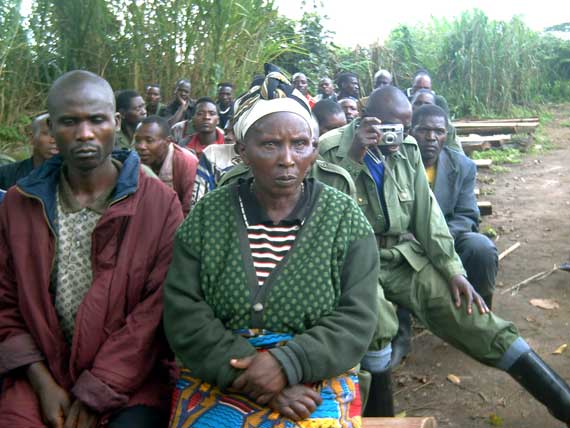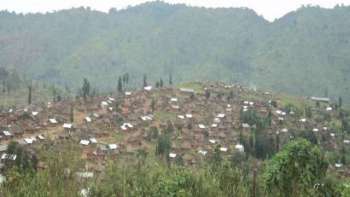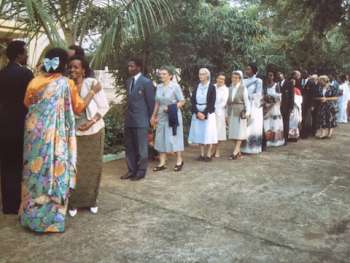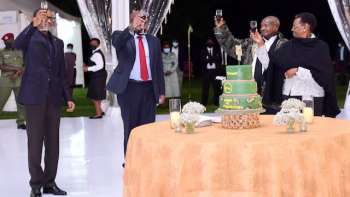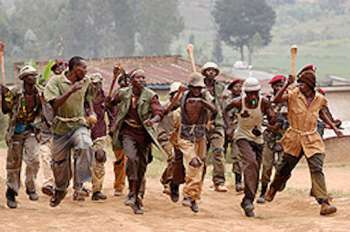The military operations planned in Eastern Democratic Republic of the Congo (DRC), that AfroAmerica Network was first to report on, have hit an unexpected roadblock. According to sources close to key participants, the roadblock was hit when unspecified people introduced 2 documentns, signed more than 11 years ago, in Rome, Italy and Kisangani, DRC, in May 2008, by the leaders of the Rwandan political parties that form the National Democratic Congress (NDC), the Government of the Democratic Republic of the Congo (DRC), and the members of the International Community.
Questionable Military Operations Planned in Eastern DRC in 2019 - 2020
As a background, after the meetings held in Goma on September 13 and 14, 2019 the military leaders of the Democratic Republic of the Congo (DRC), Rwanda, Uganda, and Burundi agreed to conduct military operations in Eastern DRC over the months of November - December 2019 (see AfroAmerica Network:Military Operations Planned in Eastern DRC: DRC's FARDC, Rwanda's RDF, Burundi's FDNBU, and Uganda's UPDF Agreement). The meeting planned in Goma on October 24 and 25, 2019 was to finalize the operations plan. The meeting was going as planned, until two documents were distributed to the meeting participants.
In key discussions during the meeting, the documents became the center and the subject of intense debates.The questions from most participants were about what happened to the process described in the documents, and why the peaceful process was not mentioned in early meetings held in July and September 2019, and instead the focus has always been on a deadly military operations. According to the sources, most of the questions came from the representatives of the Ugandan and Burundian Military, AFRICOM, and MONUSCO. Rwandan military representatives denied knowing about the documents and the process, but were confronted by proofs of the participation of Rwandan government officials during the July 2008 disarmament ceremony in Kasiki. In the end, the participants from Uganda, Burundi, Tanzania, AFRICOM and MONUSCO rejected any foreign military involvement in the DRC, and instead asked the DRC government to reconsider the process included in the documents.
Rome and Kisangani Roadmap by RUD-Urunana and RPR
The documents, known as the Kisangani Roadmap ( as shown here, Conclusions des Travaux de la Commission Technique de la Conference de Kisangani
and here Kisangani Process: Feuille de Route Sur Le Desarmement RUD et RPR), were the result of intense negotiations held in Rome between the DRC Government and the Rwandan political organization group, National Democratic Congress, which includes the Rally for Unity and Democracy (RUD-Urunana) and Rally of the Rwandan People (RPR - Inkeragutabara).
The 2008 - 2009 negotiations in Rome were mediated by the current Bologna Archbishop Cardinal Matteo Zuppi (see here: Bologna Archbishop Matteo Zuppi, Moral Witness of Peace Processes, Created Cardinal), then the leader of Sant'Egidio Community, with the involvement of the Norwegian organization known as SIK-Norway and Eglise du Christ au Congo (ECC). The Kisangani Roadmap was finally co-signed by the European Union, the South African Government, OCHA, Eglise du Christ au Congo (ECC Sud-Kivu) and the World Bank. The United States government and the leaders of the UN Peace Keeping Forces in DRC, MONUC, now MONUSCO, witnessed the signature ceremony held in Kisangani on May 28, 2008.On July 31, 2008, in Kasiki, North-Kivu, in a ceremony organized under the watch of the UN Peace Keeping Forces in DRC, MONUC, and FARDC, RUD-Urunana and RPR political and military leadership led the disarmament and regroupment of around 500 combattants and 3,000 dependents, in front of the international community, including most of the ambassadors based in DRC, NGOs, DRC government officials and official representatives of the Rwandan government.
From 6 to 8 August 2008, the UN mission in Congo (MONUC) conducted and completed the identification of the refugees regrouped in Kasiki.
On 8 August 2008, the British ambassadors based in the DRC and Rwanda visited the disarmed Rwandan refugees in the Kasiki camp.
On 23 January 2009, a delegation of refugees grouped and disarmed in Kasiki visited Kigali in order to ascertain of the conditions that awaited them once repatriated to Rwanda. At the end of the visit, the delegation prepared and published an ad-hoc report.
On 27 January 2009, an agreement between the NDC and the Government of the DRC was signed in Rome. The Agreement provided for the creation of a peace zone in and around Kasiki, where people who do not want to fight or fleeing combats should be accommodated to receive protection and humanitarian assistance.Military Operations Thwarthed by the Forgotten Rome and Kisangani Roadmap?
In the night of February 10, 2009, the combatants and their dependents regrouped in Kasiki disappeared. The statements published by MONUC, the DRC Government and the medias just after the incident alluded to the fact that these disarmed combatants along with their defenseless dependents, including women, children, and the elderly were attacked by the coalition of Rwandan Defense Forces (RDF) and the FARDC.
On February 10, 2009, Mr. Lambert Menge Omalanda, DRC Communications Minister and Government Spokesperson, stated in the Congolese media that the attack was organized in Kinshasa and the Kivu by "extremists" and "troublemakers bent into disrupting the pacification of the East."The Kisangani Process was, hence, ended. But, was it?
In fact, mostly because of the 2 documents related the Kisangani Peace Process Roadmap, at the end of the two days meeting, on 25 October 2019, the military leaders from Uganda, Burundi, and Tanzania, along with AFRICOM and MONUSCO backed down or simply refused to sign a Memorandum of Understanding. The Memorandum of Understanding was supposed to solidify the agreement on conducting joint military operations against various rebel and armed groups operating in Eastern DRC. As a face saving move, it was proposed to position the resolution of the failed meeting as providing technical and intelligence support to FARDC rather than ground troops to highlight that DRC doesn't lack military man power or logistics.
Ms. Leila Zerrougui, the MONUSCO Head put it bluntly when the press asked her about the planned controversial military operations: "The mandate of MONUSCO is to support the FARDC and not foreign forces coming into the DRC."
"I persist and I sign: the best way to fight against armed groups is not to start a war; ... I think the best way to tackle this scourge is to identify the root causes and dry them up.", Ms Zerrougui added.
Brief, the Kisangani Process between DRC Government and the Rwandan political organization National Democratic Congress (NDC), a coalition between RUD-Urunana and RPR, signed more than 11 years ago, in Rome on May 9, 2008 and Kisangani on May 28, 2008 , was instrumental in thwarting the planned military operations in Eastern DRC by troops from foreign countries, including Rwanda, Uganda, Burundi, and Tanzania.
AfroAmerica Network will continue to follow and update as the details come.
@AfroAmerica Network
Military Operations Planned in Eastern DRC: RUD-Urunana and RPR 2008 Kisangani Roadmap Foils the Agreement
Typography
- Smaller Small Medium Big Bigger
- Default Helvetica Segoe Georgia Times
- Reading Mode



